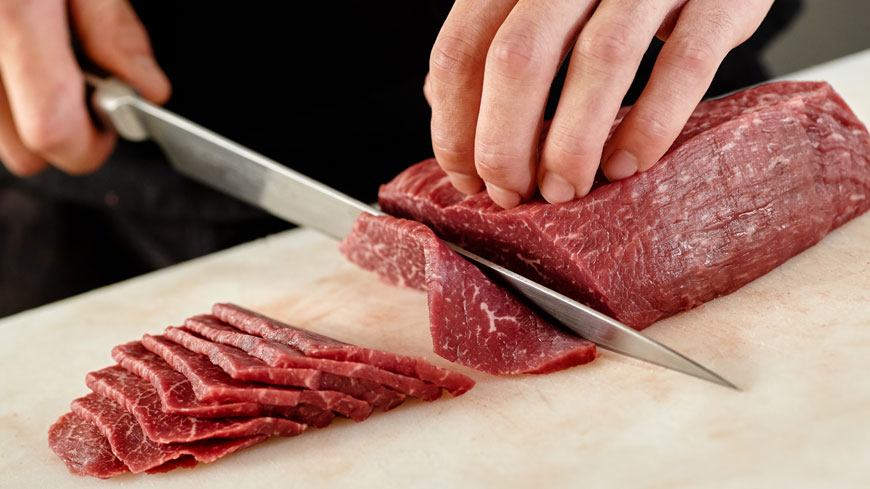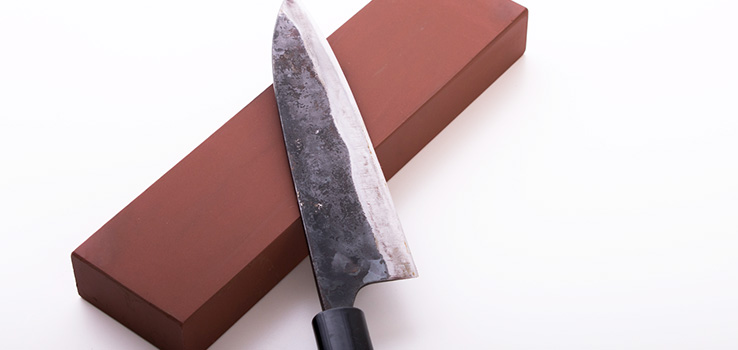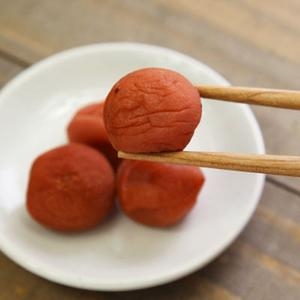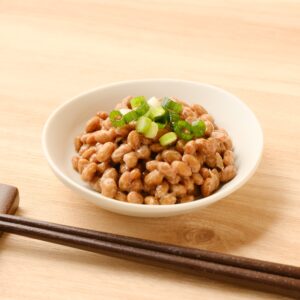
Have you heard of “Santoku Knife?”
This might be an easy answer or chefs, people who cooks for daily basis or cuisine expert.
In this article, we would like to introduce you to one of the Japanese Kitchen Knife, the Santoku Knife (三徳包丁). It is one of the essential kitchen utensils both for a beginner cook to professional chefs.
So, for those who want to start learning about cooking,
or you who want to know more about Santoku Knife,
Hopefully this article would be a big help for you!
Contents List
- The Introduction of Santoku Knife
- What is a Santoku Knife Best Used for?
- How to Use Santoku Knife?
- What is The Difference Between Santoku Knife and Chef’s Knife
- Learn How The Knife was Made!
- Which is The Best Method to Make Knife? – The Hammering Method vs Casting Method –
- How to Care Your Knife
- Basic Care Method
- How to Sharpen a Santoku Knife
- How to Choose The Best Santoku Knife
- Santoku Knife Q&A
- The Recommended Products for Santoku Knife
The Introduction of Santoku Knife
Santoku Knife (三徳包丁) is an all-purpose kitchen knife originated in Japan.
The word santoku in Japanese means “three virtues” or “three uses”.
Therefore, it can be use for slicing, dicing, and mincing.

The Brief History of Santoku Knife
Santoku is a great kitchen knife that has changed the history of knives conveniently in Japan. As a Japanese knife, the santoku knife was made with the traditional forging technique which is inherited from skillful blacksmiths and swordsmiths who made Japanese katana.
Before the santoku knife was known in Japan, all Japanese people are using various knives for each material.
To cut meat, they used Gyuto knife.
To cut vegetables, they used Nakiri knife.
To cut fish, they used Deba knife. And many more.
You can read further information about the kinds of Japanese, Western, and Chinese knives in this article:

Of course, those knives are still being used by cooking experts and chefs.
But isn’t it more convenient to have the all-purpose knife in your kitchen like Santoku Knife?
“Small and Light at Weight” Knife
Santoku Knife’s blade differs between 13 and 20 cm (5 and 8 inches) long.
If we compare the size to the Chef’s knife, the size are more smaller.
It is because santoku knife are originally designed to be use for smaller hands.
Most of the santoku knife’s handle has a seamless design, therefore you can adjust your hand grip faster and easier. It is also more light in weight, makes it easier to control.
The blade is thinner than any other knifes.
With this thin blade, a precision cut feels very effortless.

Having only one santoku knife in your kitchen will allow you to cut well ingredients such as meat, fish, and even vegetables.
It also perfect to creating fine slices, adding the aesthetics of the completed dishes.
Santoku knife is a convenient kitchen knife that can be used for most of all ingredients.
What is a Santoku Knife Best Used for?
1. For Cutting and Mincing Meat
Santoku knife can cut well meat into fine piece. Not only cutting, you can also use it to mince a meat.
However, please avoid chopping large meat bones and cutting frozen food.

2. For Slicing and Dicing Vegetables, Fruits, and Nuts
This all-purpose can also be use for vegetables, fruits, and nuts. Making it very convenient to use.
For precision tasks (such as peeling), we recommend you to use other type of knife such as petit knife.

3. For Cutting and Slicing Fish
You can also cut and slice fish into fine pieces using Santoku Knife. Now you can try many fish dishes in your kitchen!
Still, it would be best to prepare the sushi knife if you want to make sushi for a fish dish that needs a precise cut. Meanwhile, if you’re planning to cut big fish, let’s use Deba Knife, as it will smoothen the process.

How to Use Santoku Knife?
Using a knife in the right manner is safer and more efficient.
The santoku knife is a thin, small, and light-at-weight knife. It is a versatile knife because you can use it for cutting many ingredients. This makes the Santoku knife is relatively easy to use.
When cutting the ingredients, you can cut by pushing the santoku knife from above, pulling it towards you, or moving it back and forth. You can try all these 3 cutting ways using the versatile santoku knife.
Please note beforehand that you need to change the cutting method according to the food ingredients. Let’s learn more about “How to Use Knife Properly” in our link article below. Please check it out!

What is The Difference Between Santoku Knife and Chef’s Knife
Santoku knife and chef’s knife are both general and all-purpose knives. They both play an important role for professionals or home kitchens.
They also could be made from many materials like another knife, such as metal, stainless steel, or ceramic.
They may look alike at first,
but to the expert’s eye, these two knives have so many differences we could learn. Let’s discuss each knife one by one!
Santoku Knife’s Features

– Originated in Japan
– The size varies from 13 and 20 cm (5 and 8 in)
– Lighter in weight
– Usually have a thinner blade (good for more refined finish)
– Can be double-edged / single-edged knife
– Have a wide sheepsfoot blade with no tip
Chef’s Knife’s Features

– Originated in Europe country
– The size varies from 15 and 50 cm (6 and 12 in)
– Called as “Gyuto knife” or the meat knife in Japan
– Heavier to hold
– Available as double-edged knife
– Have a broad blade that curves upwards to form a tip
Helpful Advice:
If you need powerful and heavier knife for your dish, you may need the chef’s knife. But if you prefer to have more refined finish cut for your dish, using the santoku knife will definitely help you!
Learn How The Knife was Made!
Have you ever wondered how the high-quality knife was manufactured?
Watch this video from Kawamura Houchou Manufactory when they are making their best knife product! It was made with the hammering forging method. The blacksmith shaped the knife with a hammer to the desired shape. It is serious work that needs time and effort.
Please check the video below!
You can check Kawamura Houchou Manufactory’s product here.
How to make a knife (step by step)
-

STEP 1 Calculate the finished size to determine the length of the material
Hit the material with a hammer and stretch it as the beginning of forging.
-

STEP 2 Begin to forge the handle part of the knife
By doing the handle part first, we can now split which is the handle or the end of the blade.
-

STEP 3 Forge to spread the blade’s part
Adjust the temperature of the flame roughly to 900 °C and begin to spread the blade’s part with the desired length.
-

STEP 4 Warm it up and hit it with the hammer repeatedly until the desired shape is formed
The blacksmith will continue the process until it reaches the desired shape.
Which is The Best Method to Make Knife? – The Hammering Method vs Casting Method –
The Features of The Japanese Knives
The Japanese knife technology is said to born from the Japanese traditional sword, katana. It is the traditionally made Japanese sword that were used by the samurai and many other warlords in the past.
Many famous katana were born in Edo Period, therefore there are many professional swordsmiths who forged the swords. Made by the skilled swordsmiths of Japan, western historians have said that the katana were among the finest cutting weapons in world military history.
The reason between the statement above is because katana was made with traditional forging technique with strong materials.
This forging technology of the Japanese sword is said to be inherited until the modern days. They keep the tradition in order to protect the quality of the sword.

But, during the Meiji Period (after the war ended), the production of katana was banned. The swordsmiths lose their job and they were not able to make a living. That is when the Japanese knife was born.
In exchange for making swords, the swordsmiths are making kitchen knives. Using the same technique, the Japanese kitchen knife has great durability and sharpness like the Japanese katana.
In the past, most Japanese kitchen knives were handmade products. But now there are some that are also made with the casting method.
It doesn’t mean that the handmade knife is rare nowadays. If you are looking for a specific handmade Japanese kitchen knife, prior research about the manufactured might be needed.
The Hammering Method vs Casting Method – Which one is Better?

(right : the hammering method, left : the casting method)
The manufacturing process of knife have a big effect to its quality. Here, we would like to tell you about two forging method: the hammering and casting method.
Hammering Method
Hammering method is the method where the blacksmith shaped the knife with a hammer to the desired shape. The blacksmith will keep warming up the material and hit it with the hammer repeatedly until the shape is perfect. It is serious work that needs time and effort.
A metal that undergoes this method will become hard and tough, become difficult to break. Therefore, if the knife was made with this method, it will become a knife with great durability and difficult to break.
Many Japanese knives were made using this technique to keep their quality.
Here are some of our product which is made with the Hammering Method:
Casting Method
Another forging method is called the Casting method. It is done by putting the warmed-up metal (liquid metal) into a mold that contains a hollow shape of the intended shape.
A metal that undergoes this method will probably not be as hard and tough as the metal from the hammering method, but the blacksmith can make many knives at the same time.
It is an efficient way to make a knife, but only producing the normal quality knife. Because it doesn’t really have great durability, the knife made with this method is usually the inexpensive knife that you could find anywhere.
How to Care Your Knife
Basic Care Method

After use, please wash the dirt off, wipe it with cloth after rinsing it with hot/warm water, and keep it dry.
A kitchen knife is weak to acid, salt, and moisture.
If you plan to not use it for a long time,
spray it with vegetable oil (such as Camellia oil) throughout the knife after drying it. After that, wrap it in newspapers or thin papers and keep it in a place with no humidity.
Please avoid leaving it in a knife stand for a long time. The handle may be too dry and the blade may come off or it may rust with moisture.
Also, please use special kitchen knife to handle frozen foods instead of this knife.
How to Sharpen a Santoku Knife

Sharpening is an important process for your knife maintenance. A knife will gradually lose its sharpness as you use it for daily cooking activity, so we need to take good care of it. It’s recommended to sharpen your knives at least once every two months.
We have the full detailed information to properly sharpen your knife!
Please refer to this article:

Choosing the right whetstone for daily use at home is sometimes confusing. However, the most common whetstone to use is Nakato Medium Whetstone that has moderate roughness. It’s perfect for sharpening your daily used kitchen knife.
How to Choose The Best Santoku Knife
Now you know about the santoku knife.
It’s time to choose what is the best santoku knife for you.
Choosing the best santoku knife will help to gain satisfaction with our finished dish.
Size matters
Let’s choose the Santoku Knife size based on your needs.
As we know, the Santoku knife’s blade size differs between 13 and 20 cm (5 and 8 in) long. The Japanese house knives usually use the 16.5 – 18 cm long blade.
If you choose the long blade, it will help you to cut bigger ingredients efficiently. Not only for the big portion of meat but large vegetables like daikon or pumpkin can also be handled easier.
On the other side, choosing the mini size of the Santoku knife will help you achieve the best results when cutting smaller ingredients. You will need this to handle the smaller parts of meat or small-sized fruit like kiwi or strawberry.
However, the Santoku knife is a light knife with a wide blade. Using this advantage, still, you can use every size consistently.
The Raw Material Matters
Knife can be made from steel, stainless steel, or ceramic.
They have their own advantages and disadvantages, therefore it is difficult to give perfect score for the materials.
To summarize it easily:
・If your priority is the sharpness …………「Steel(Carbon Steel)」
・Sharp + Rust-resistant ………………………「Stainless Steel」
・Easy operation and light weight …………「Ceramics」
For that reason, we think that it is good to first arrange the important point you think is necessary for kitchen knife, and then choose the right one that suits it.
Santoku Knife Q&A
- What is a santoku knife?
- Santoku knife is an all-purpose Japanese knife. The word santoku in Japanese means “three uses”, therefore santoku knife can be use for slicing, dicing, and mincing.
Santoku knife was created by combining Nakiri Bocho knife (Japanese traditional knife used for cutting vegetables) and Gyuto knife (knife for cutting meat).
- I heard that the santoku knife is a versatile knife. What is a santoku knife used for?
- The santoku knife is most suitable to be used for:
1. For Cutting and Mincing Meat
2. For Slicing and Dicing Vegetables, Fruits, and Nuts
3. For Cutting and Slicing FishPlease note to avoid chopping large meat bones and cutting frozen food using a santoku knife.
- How to use a santoku knife?
- When cutting ingredients, you can cut by pushing the santoku knife from above, pulling it towards you, or moving it back and forth. The cutting method, however, is different according to the food ingredients.
To cut vegetable or hard meat ……………… “Push-cutting” method
To cut soft ingredients (fish, soft meat) …… “Slicing” method.
The slicing method using santoku knife will help you to cut the surface more beautifully.
- What is the difference between santoku knife and chef’s knife?
- Santoku knife and chef’s knife are both general and all-purpose knife.
Santoku knife is a knife originated in Japan, the size varies from 13 to 20 cm, lighter in weight, and usually have a thinner blade. Meanwhile, the chef’s knife is originated in Europe country, have a relatively longer size (15 to 50 cm), and heavier than the santoku knife.
- How to sharpen a santoku knife?
- Sharpening knife with a whetstone is one of the method to sharpen knives. The knife sharpened with whetstone will have a well cutting edge and can have a long last sharpness.
It’s recommended to sharpen your knives at least once every two months.Learn the detailed instruction of how to sharpen knives in our article:
【Let’s Learn About Knives – Extra Edition】 How To Sharpen Knives | How To Sharpen Knives Using Whetstone
- How to choose The best santoku knife?
-
1. Choose the size.
If you choose the long blade, it will help you to cut bigger ingredients efficiently.
In the other side, choosing the mini size of santoku knife will help you achieve the best results when cutting smaller ingredients.2. Choose the knife’s raw material.
If your priority is the sharpness, choose the steel knife.
Sharp + Rust-resistant, choose the stainless steel knife.
Easy operation and light weight, choose the ceramic knife.
The Recommended Products for Santoku Knife
Still confuse to choose what is the best Santoku knife for you?
In Kawashima The Japanstore, we have some of the best santoku products made by skillful Japanese blacksmiths and wordsmiths. It’s a handmade knife made carefully one by one. If you are interested in the product but it’s currently out of stock, kindly drop a question in our email. Please check it by all means!












